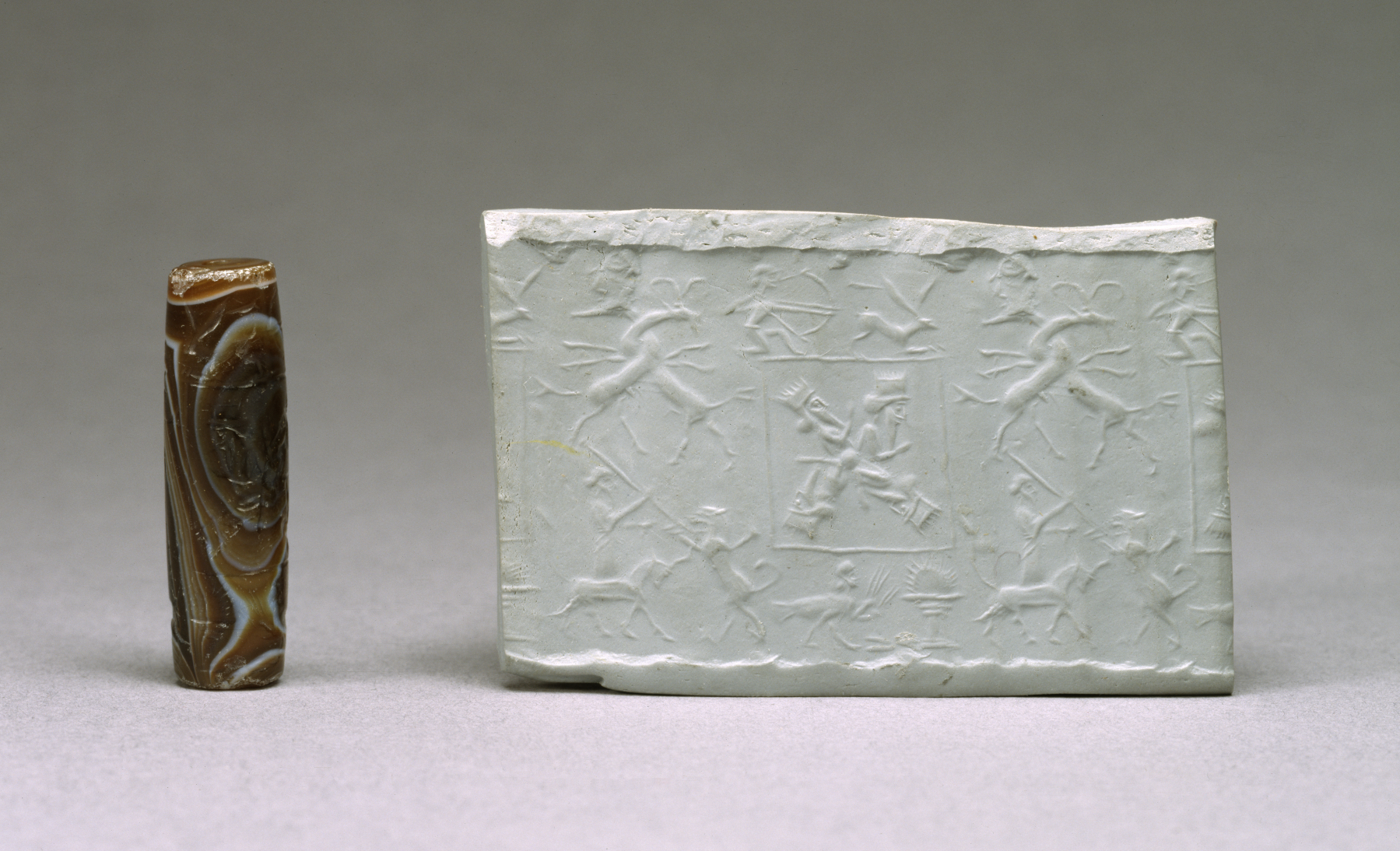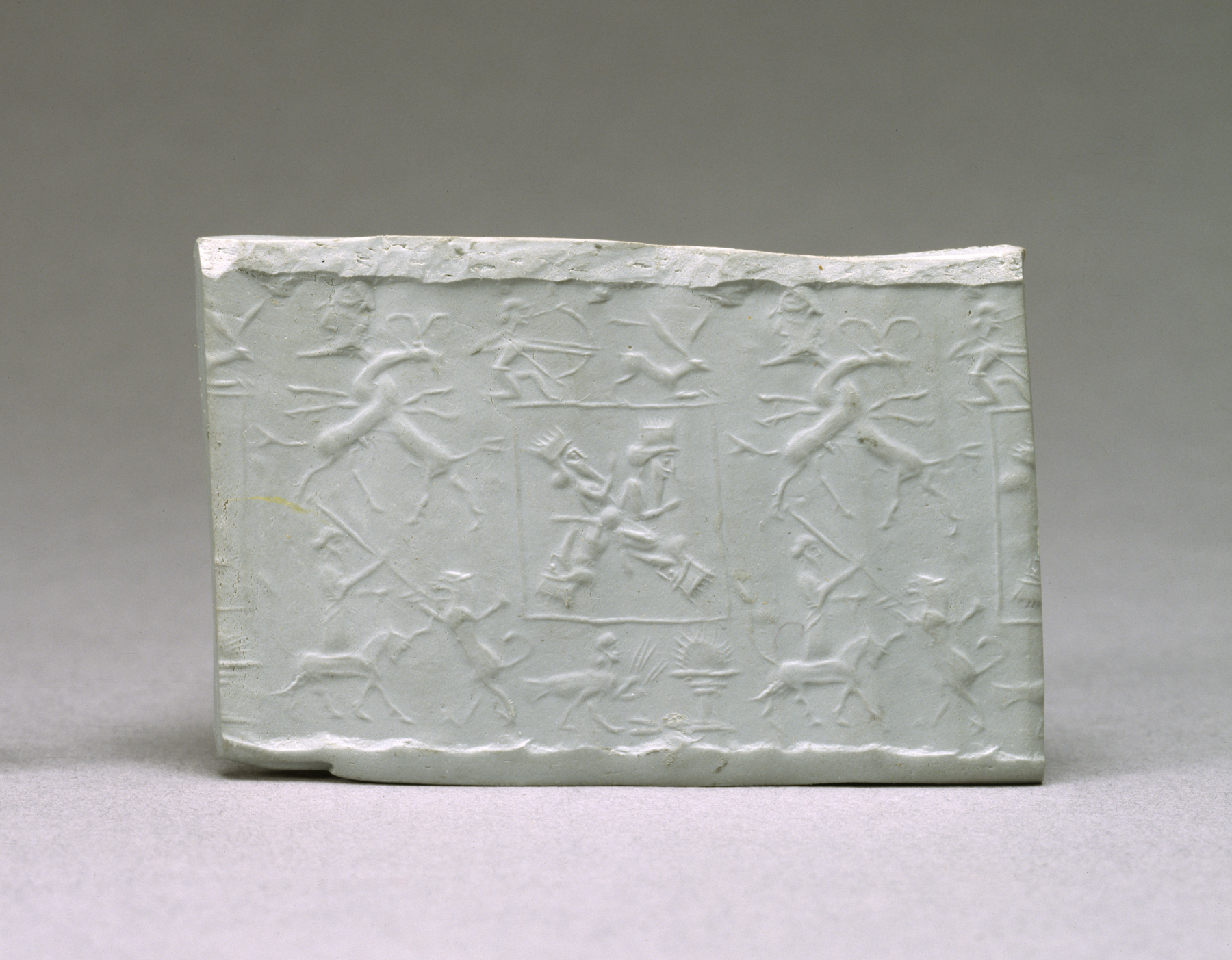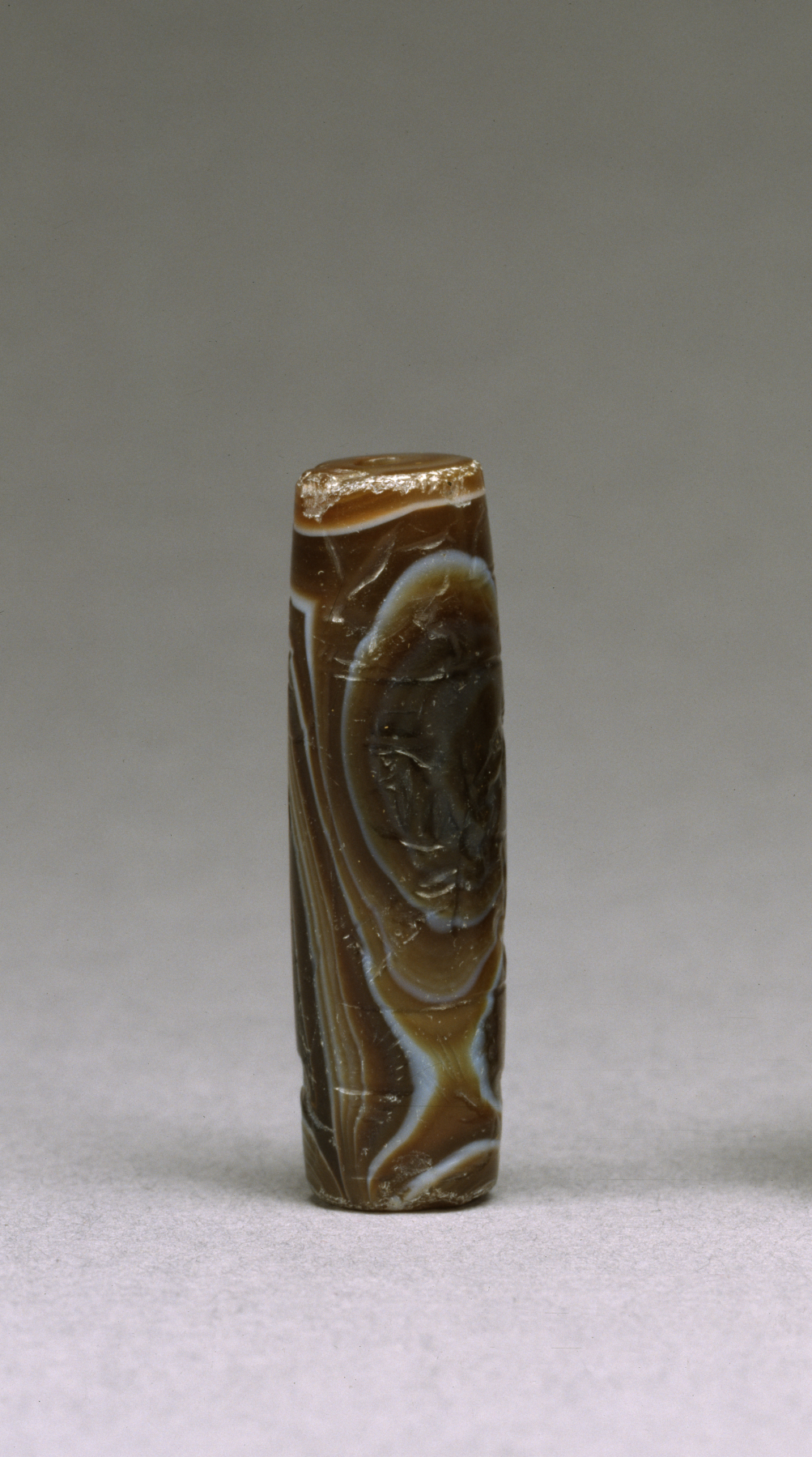Cylinder Seal with Heroes, Hunters, and Animals
(Ancient Near East )
After defeating Babylonia in 539 BCE, the Achaemenid dynasty considered itself heir to Mesopotamian traditions, including the use of cylinder seals. In a square, four crowned busts of the king or possibly the god Ahura Mazda form a pinwheel. Animal scenes surround the panel: a kneeling archer shooting at a hare, a human-headed bird before an altar, a figure standing on a bull spearing a rearing lion, and two rearing goats entwining their necks.
Cylinder seals are cylindrical objects carved in reverse (intaglio) in order to leave raised impressions when rolled into clay. Seals were generally used to mark ownership, and they could act as official identifiers, like a signature, for individuals and institutions. A seal’s owner rolled impressions in wet clay to secure property such as baskets, letters, jars, and even rooms and buildings. This clay sealing prevented tampering because it had to be broken in order to access a safeguarded item. Cylinder seals were often made of durable material, usually stone, and most were drilled lengthwise so they could be strung and worn. A seal’s material and the images inscribed on the seal itself could be protective. The artistry and design might be appreciated and considered decorative as well. Cylinder seals were produced in the Near East beginning in the fourth millennium BCE and date to every period through the end of the first millennium BCE.
Provenance
Provenance (from the French provenir, 'to come from/forth') is the chronology of the ownership, custody, or location of a historical object. Learn more about provenance at the Walters.
Henry Walters, Baltimore, 1913, by purchase; Walters Art Museum, 1931, by bequest.
Exhibitions
| 1978 | Ancient Persia: The Art of an Empire. University Art Museum, University of Texas at Austin, Austin; The Walters Art Gallery, Baltimore. |
Conservation
| Date | Description | Narrative |
|---|---|---|
| 5/28/1970 | Treatment | cleaned; other |
| 4/1/1983 | Treatment | cleaned; other |
Geographies
Iran (Place of Origin)
Measurements
H: 1 5/8 x Diam: 1/2 in. (4.2 x 1.2 cm)
Credit Line
Acquired by Henry Walters, 1913
Location in Museum
Accession Number
In libraries, galleries, museums, and archives, an accession number is a unique identifier assigned to each object in the collection.
In libraries, galleries, museums, and archives, an accession number is a unique identifier assigned to each object in the collection.
42.445






